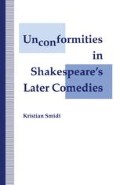Abstract
Post-Shakespearean generations in England and elsewhere are the fortunate inheritors of a body of dramatic masterpieces which by common consent are unsurpassed in the history of European literature at least since the ancient Greeks, and which are preserved in print in editions published during the lifetime of the author or shortly after. The only trouble (which is no problem at all to the vast majority of Shakespeare’s admirers but which is apt to worry dedicated interpreters) is that neither the quartos published prior to 1623 nor the great Folio collection of that year are the word of God. They have no absolute authority. Some of the plays have come down to us in variant versions. Some have peculiarities which indicate their provenance from untidy manuscripts (‘foul papers’) or memorial reports. The texts had an eventful history before reaching print. Transcripts were made for various purposes and by various persons. Stage performances would require adaptation, and special demands were made by court appearances and provincial tours. There was censorship before licence to play. And finally the printing process added its quota of interference. In all of this a great deal happened to the original texts by way of deliberate alteration or accident, particularly on the micro-level (obvious confusions and corruptions of detail have always been noticed), but sometimes on the macro-level too (and these are often harder to trace).
Access this chapter
Tax calculation will be finalised at checkout
Purchases are for personal use only
Preview
Unable to display preview. Download preview PDF.
Notes
See e.g. Jones, Scenic Form in Shakespeare (1971, 1985) and
Rose, Shakespearean Design (1972).
Price, ‘Measure for Measure and the Critics’, SQ XX.2 (1969), p. 203.
Gesner, Shakespeare and the Greek Romance/A Study of Origins (1970);
Bulman, The Heroic Idiom of Shakespearean Tragedy (1985).
Relevant quotations from Jonson, Manningham, etc. are conveniently collected in Chambers, William Shakespeare: A Study of Facts and Problems (1930), Vol. II, pp. 207–10, 328–44. There are photo-reproductions of the Swan sketch and the Titus scene in
Thomson, Shakespeare’s Theatre (1983), plates 4 and 11. 7. ‘Unconformity’ is a term borrowed from geology and was first used in a Shakespearean connection by Rossiter — see
Smidt, Unconformities in Shakespeare’s History Plays (1982), p. 1.
Foakes, Shakespeare: The dark comedies to the last plays (1971), p. 3.
Frye, A. Natural Perspective (1965), p. 13.
See Bibliography. Among the characteristics which distinguished Shakespeare’s plays, Coleridge listed first ‘Expectation in preference to surprize’: ‘God said, let there be LIGHT: and there was LIGHT. not there was Light. As the feeling with which we startle at a shooting star, compared with that of watching the Sunrise at the pre-established moment, such and so low is Surprize Comp. with Expect.’ (Coburn, ed., The Collected Works of Samuel Taylor Coleridge, 5, 1987, p. 129.)
See Baldwin, Shakspere’s Five-Act Structure (1947, 1963), pp. 576, 668.
See Herrick, Comic Theory in the Sixteenth Century (1950, 1964), pp. 109, 119.
See Salingar, Shakespeare and the Traditions of Comedy (1974), pp. 187, 223.
See Bradbrook, The Growth and Structure of Elizabethan Comedy, New edn (1973, 1979), pp. 4–5, 119.
Frye, The Myth of Deliverance (1983), pp. 14–15.
See also Smidt, Unconformities in Shakespeare’s Early Comedies (1986), p. 14.
Barber, Shakespeare’s Festive Comedy (1959).
Pettet, Shakespeare and the Romance Tradition (1949, 1970), pp. 122–8.
Boas, Shakspere and his Predecessors (1896).
Lawrence, Shakespeare’s Problem Comedies (1931, 1969);
Tillyard, Shakespeare’s Problem Plays (1950, 1970).
Tillyard, Shakespeare’s Last Plays (1938).
See also Mowat, The Dramaturgy of Shakespeare’s Romances (1976), p. 6.
Author information
Authors and Affiliations
Copyright information
© 1993 Kristian Smidt
About this chapter
Cite this chapter
Smidt, K. (1993). Introduction. In: Unconformities in Shakespeare’s Later Comedies. Palgrave Macmillan, London. https://doi.org/10.1007/978-1-349-13063-4_1
Download citation
DOI: https://doi.org/10.1007/978-1-349-13063-4_1
Publisher Name: Palgrave Macmillan, London
Print ISBN: 978-1-349-13065-8
Online ISBN: 978-1-349-13063-4
eBook Packages: Palgrave Literature & Performing Arts CollectionLiterature, Cultural and Media Studies (R0)

